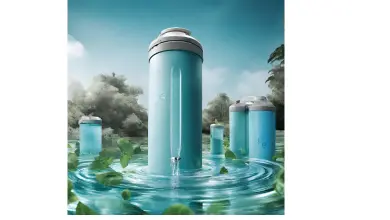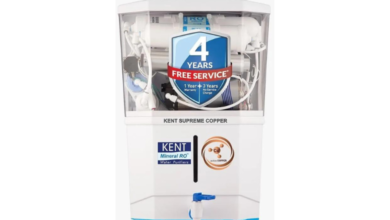Understanding the Adsorption Mechanism in Activated Carbon Filters

The Foundation of Adsorption
Definition of Adsorption
Adsorption, a process distinct from absorption, involves the attraction and retention of contaminants on surfaces. Activated carbon, with its unique surface phenomena, becomes a powerful tool for water purification. The intriguing aspect lies in the porous structure of activated carbon, featuring a vast surface area and an intricate network of pores. This structural configuration enhances its adsorption capacity, making it highly efficient in trapping and removing various impurities.
The Power of Pores
Activated carbon’s unique structure, characterized by a vast surface area and intricate network of pores, enhances its adsorption capacity. This section explores how the porous architecture contributes to the efficiency of the adsorption mechanism.
Activation of Carbon: Creating an Adsorption Powerhouse
The Activation Process
To comprehend the adsorption mechanism fully, it’s crucial to understand the activation process that transforms raw carbon into a porous structure conducive to adsorption. Activation methods include physical and chemical processes, each imparting distinct characteristics to the activated carbon. The type of activated carbon—whether powdered, granular, or in block form—also significantly influences its adsorption capabilities. The variation in pore size distribution among these types further impacts adsorption selectivity, allowing for targeted removal of specific contaminants.
Types of Activated Carbon
Exploring variations in activated carbon types, such as powdered, granular, and block filters, reveals their suitability for different applications. Understanding the impact of pore size distribution enhances insight into adsorption selectivity.
Adsorption Mechanism in Action
Contaminant Attraction
The process of adsorption is a dynamic interplay between activated carbon and contaminants. Forces drive contaminants toward activated carbon surfaces, where specific interactions occur. The diversity of pollutants, ranging from organic compounds to chlorine, underscores the versatility of activated carbon in adsorbing a wide spectrum of impurities.
Adsorption Kinetics
Adsorption kinetics, examining the rate at which adsorption occurs, is critical for optimizing water treatment processes. Factors influencing adsorption kinetics, such as the nature of contaminants and the characteristics of the activated carbon, determine the efficiency and speed of the adsorption mechanism.
Factors Influencing Adsorption Efficiency
Temperature Effects
Temperature and pH play pivotal roles in adsorption efficiency. Temperature influences the adsorption capacity of activated carbon, with variations impacting the overall performance. Similarly, pH dependency affects the adsorption processes, emphasizing the need to tailor activated carbon applications based on the pH characteristics of the water source.
pH Dependency
The pH sensitivity of adsorption processes is explored, highlighting the need to tailor activated carbon applications based on the pH characteristics of the water source.
Adsorption Capacity and Equilibrium
Saturation Points
Understanding adsorption capacity and saturation points is fundamental. Adsorption capacity refers to the maximum amount of contaminants that activated carbon can effectively remove. Achieving equilibrium, the state where adsorption and desorption occur at equal rates, is crucial for continuous water treatment. The time required for activated carbon to reach adsorption equilibrium influences the effectiveness of filters in sustained purification.
Also Read: Best Water Purifier Under 15000 In India
9 Best Water Purifier in India
Achieving Equilibrium
Investigating the time required for activated carbon to achieve adsorption equilibrium sheds light on how equilibrium impacts the effectiveness of filters in continuous water treatment.
Regeneration of Activated Carbon Filters
Depleting Adsorption Sites
Over time, activated carbon filters may deplete their adsorption sites, necessitating regeneration. Examining the depletion of adsorption sites and exploring regeneration techniques, whether through thermal reactivation or chemical rejuvenation, is essential for maintaining optimal filter performance. Choosing the right regeneration method depends on factors such as the type of activated carbon and the contaminants it has adsorbed.
Regeneration Techniques
Various regeneration methods, from thermal reactivation to chemical rejuvenation, are investigated. The effectiveness and sustainability of different regeneration approaches are evaluated.
Applications of Activated Carbon Adsorption
Drinking Water Treatment
Activated carbon finds extensive applications in water treatment, particularly in municipal drinking water. It effectively targets specific contaminants, providing a comprehensive solution for improving water quality. Beyond drinking water treatment, activated carbon showcases versatility in industrial applications, including air purification and wastewater treatment. Its ability to mitigate environmental pollutants positions it as a valuable tool in addressing broader ecological challenges.
Industrial and Environmental Uses
The versatility of activated carbon in diverse industrial applications, including air purification and wastewater treatment, is explored along with its ability to mitigate environmental pollutants.
Challenges and Considerations
Contaminant Specificity
While activated carbon is effective, its selectivity for different contaminants poses challenges. Tailoring solutions based on water quality characteristics becomes imperative. Balancing the economic costs of activated carbon with its environmental benefits is crucial. Strategies for optimizing cost-effectiveness while minimizing environmental impact require careful consideration.
Economic and Environmental Impacts
Balancing the economic costs of activated carbon with its environmental benefits is crucial. Strategies for optimizing cost-effectiveness while minimizing environmental impact are explored.
Future Innovations in Adsorption Technology
Nanotechnology Integration
The future of adsorption technology holds exciting prospects. Integration with nanotechnology stands out as a potential game-changer, enhancing adsorption efficiency through advanced materials. Smart adsorption systems, capable of adapting to real-time water quality, are on the horizon. These systems, equipped with sensors and data analytics, offer precise and efficient adsorption tailored to specific conditions.
Smart Adsorption Systems
The prospect of smart systems that adapt adsorption based on real-time water quality is unveiled. Integration of sensors and data analytics for precise and efficient adsorption is examined.
Conclusion
In synthesizing key insights into the adsorption mechanism of activated carbon filters, it’s evident that this process plays a critical role in water purification. The ongoing quest for water purity relies on innovations and continuous exploration of activated carbon applications. As we acknowledge the evolving nature of adsorption technology, it becomes clear that its role remains indispensable in the dynamic landscape of water treatment. Encouraging further exploration and innovation will undoubtedly contribute to meeting the ever-changing challenges of water purification.






